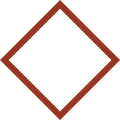 Fehu Fehu |
 Uruz Uruz |
 Thurisaz Thurisaz |
 Ansuz Ansuz |
 Raidho Raidho |
 Kenaz Kenaz |
 Gebo Gebo |
 Wunjo Wunjo |
 Hagalaz Hagalaz |
 Naudhiz Naudhiz |
 Jera Jera |
 Eihwaz Eihwaz |
 Perthro Perthro |
 Elhaz Elhaz |
||
 Tiwaz Tiwaz |
 Ehwaz Ehwaz |
 Mannaz Mannaz |
 Laguz Laguz |
 Ingwaz Ingwaz |
 Dagaz Dagaz |
 Othala Othala |
Runes were a writing system used by the Germanic Peoples. The Meldorf Brooch was dated to the 1st century CE and the inscription found on it is accepted by most experts to be the earliest runic inscription found until now. Runes were not used in the way that we use our alphabet these days as most people weren’t really literate up until the end of the Viking Age and there is no record of writing Runes on paper or other perishable materials as the Romans did for example. Runes were carved into wood and stone or etched into metal. Historical facts about the Runes can be found in the Runology section.
Surviving inscriptions as well as literary sources (Eddas, Icelandic Sagas) strongly suggest that Runes were also used in a magical context. This section deals with these magical properties. There are lots of books and even more websites that deal with this topic and they all claim to know exactly what each Rune means. Unfortunately, they rarely reveal the historical or mythological basis of their interpretations. This is not how the Gild approaches the Runes. While we agree that intuition and personal insights are essential in order to work with any magical system, we believe that it is important to base these insights on a solid historical and mythological foundation. In case of the Runes, we have the traditional Rune names, which in turn are based on three surviving historical Rune Poems as well as the Eddas and Sagas.
Starting to work with an ancient magical system is like sitting on a flat island that is surrounded by a sea of energy and magical power. This energy can’t flow over flat land so by working with the system we start to scratch small grooves into the ground, 24 in case of working with the elder Futhark, through which this energy can flow to us. After a while, these grooves are deep enough so that some of the power can flow through them and become available to us. If instead of declaring ourselves to be the center of the Universe and therefore insisting on scratching these grooves into the surface all by ourselves, we had thoroughly explored the island, we would have found 24 massive trenches that were already connected to the sea surrounding it. They were dug over a long period of time by generations of people but were out of use for a while, so they’re clogged in some places and some small parts have collapsed. By studying the Mythology, the culture as well as the historical and archeological facts about the people that dug these trenches, they are restored and the energy and magical power can once more flow through them again. The amount of energy that can flow through these deep trenches will be indefinitely larger than whatever trickles through the small grooves we have scratched into the ground by ourselves…
While the commonly used Rune names correspond with these Rune Poems they are not in Old English or Old Norse (the language in which the poems were composed) but in Proto Germanic, a linguistically reconstructed language that is the common Ancestor of all Germanic languages. There is a page for each Rune where you can find the corresponding Verses from the different Rune Poems as well as an interpretation of the magical properties of each Rune based on the Poems, the mythological, historical and archeological sources. There is far more to be discovered about each Rune than what we can and want to present on this website but in order to uncover those aspects one has to study the lore and the sources and earnestly work with the system for quite a long time. Here we simply present a short introduction…
___________________________
D. L., Switzerland

